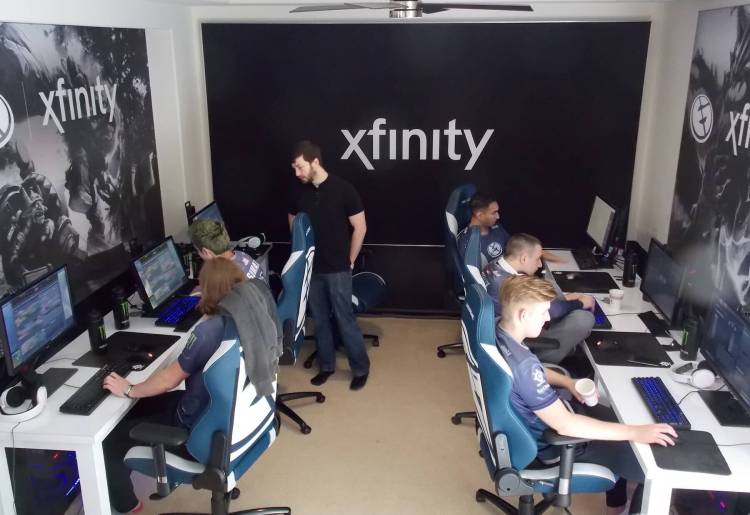For many sports fans, Oakland, Calif. is best known for three teams: the Oakland Raiders, Golden State Warriors, and Oakland A’s. But if esports continues to grow at a rapid pace, the Evil Geniuses may soon join that hallowed list.
In the middle of a quiet suburb in Alameda County is the home and training facility for the Evil Geniuses Dota 2 esports team. (Evil Geniuses is a franchise that includes multiple teams competing in different games). Dota 2, from developer Valve, is a free 5-on-5 multiplayer online battle arena game (MOBA) where each team tries to destroy their opponents’ base. It’s one of the most popular games in the world, as well as an important part of the $493 million esports market.
Major tournaments regularly offer multi-million dollar prizes and attract a huge online audience. It all builds up to The International (TI), Valve’s annual Dota 2 world championship that takes place in Seattle’s KeyArena stadium. To date, Evil Geniuses is the only American team to ever win the tournament — at TI5 in 2015.
That puts a lot of pressure on team captain Andreas “Cr1t-” Nielsen, Ludwig “zai” Wåhlberg, Saahil “Universe” Arora, Sumail “Suma1L” Hassan, Artour “Arteezy” Babaev, and their coach, Clinton “Fear” Loomis. Like other professional athletes, the six young men live highly unusual lives. In a lot of ways, they’re in a 24/7 reality show, and not just because of their massive followings on social media.
June 5th: The AI Audit in NYC
Join us next week in NYC to engage with top executive leaders, delving into strategies for auditing AI models to ensure fairness, optimal performance, and ethical compliance across diverse organizations. Secure your attendance for this exclusive invite-only event.
When a few other reporters and I met with the team, a small crew of cameramen greeted us as we entered the house. They filmed part of our visit for True Sight, Valve’s online documentary series on Dota 2 esports. It was hard not to feel a little self-conscious while cameras and boom mics were inches away from my face.
But the players looked like they were used to the attention. They were preparing for the Boston Major, the first big tournament of the 2016-2017 season.
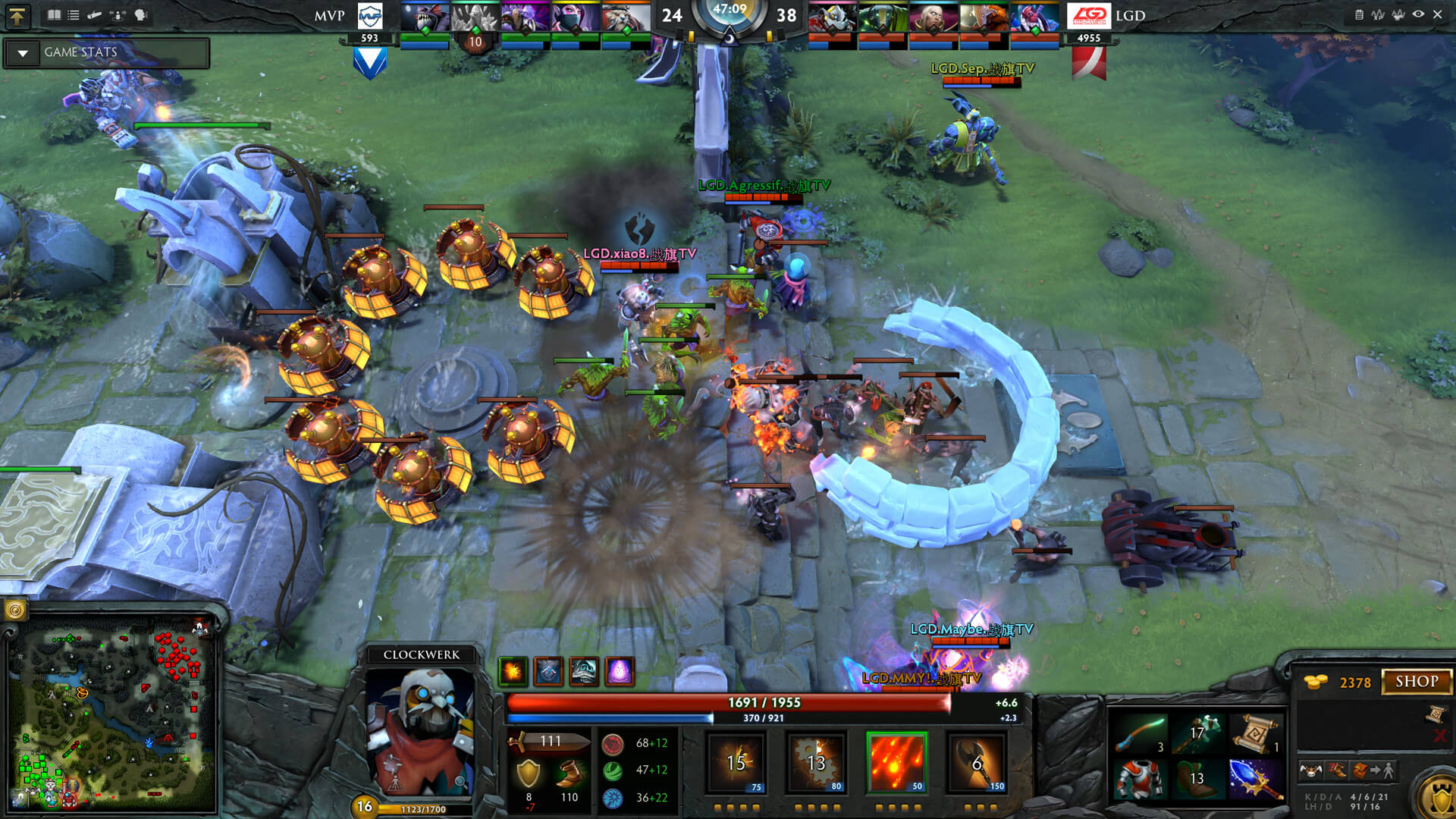
Above: A typical match in Dota 2.
Getting through a lengthy season
Dota 2 players live by a grueling schedule. Last year’s International, where Evil Geniuses finished in third and took home over $2 million, ended in mid-August. After that was the off-season, a chaotic time where teams can sign and drop players (sometimes entire rosters) in the hopes of putting together a championship-worthy squad. EG Dota 2 team manager Phillip Aram described it as “free agency and training camp” all rolled into one.
For Evil Geniuses, the time off lasted about a month before players came back in September to practice for a tournament in October. When that was over, they took another few weeks off before returning to Alameda to prepare for the new season. At the time of our visit, the team was in the middle of a six-week stretch of back-to-back events in which the players were either together at the house or on the road for tournaments. They didn’t have any time to visit their families.
“From a season standpoint, [Dota 2] is more like golf or tennis. It just kind of keeps going,” Aram told GamesBeat. “There isn’t really a break. It’s not like a traditional sport.”
While living in the same house isn’t necessary or always feasible for esports players, it seems to add some much-needed stability to EG’s busy lifestyle. Being in the same time zone, for instance, helps a lot when it comes to establishing discipline and practice routines.
The practice room is actually the first place you see when you walk through the five-bedroom house. The team has an array of PCs, headsets, chairs, and other accessories. Plastered on the walls are black-and-white art from Dota 2, as well as prominent logos for Comcast (one of their primary sponsors) and its Xfinity branding.
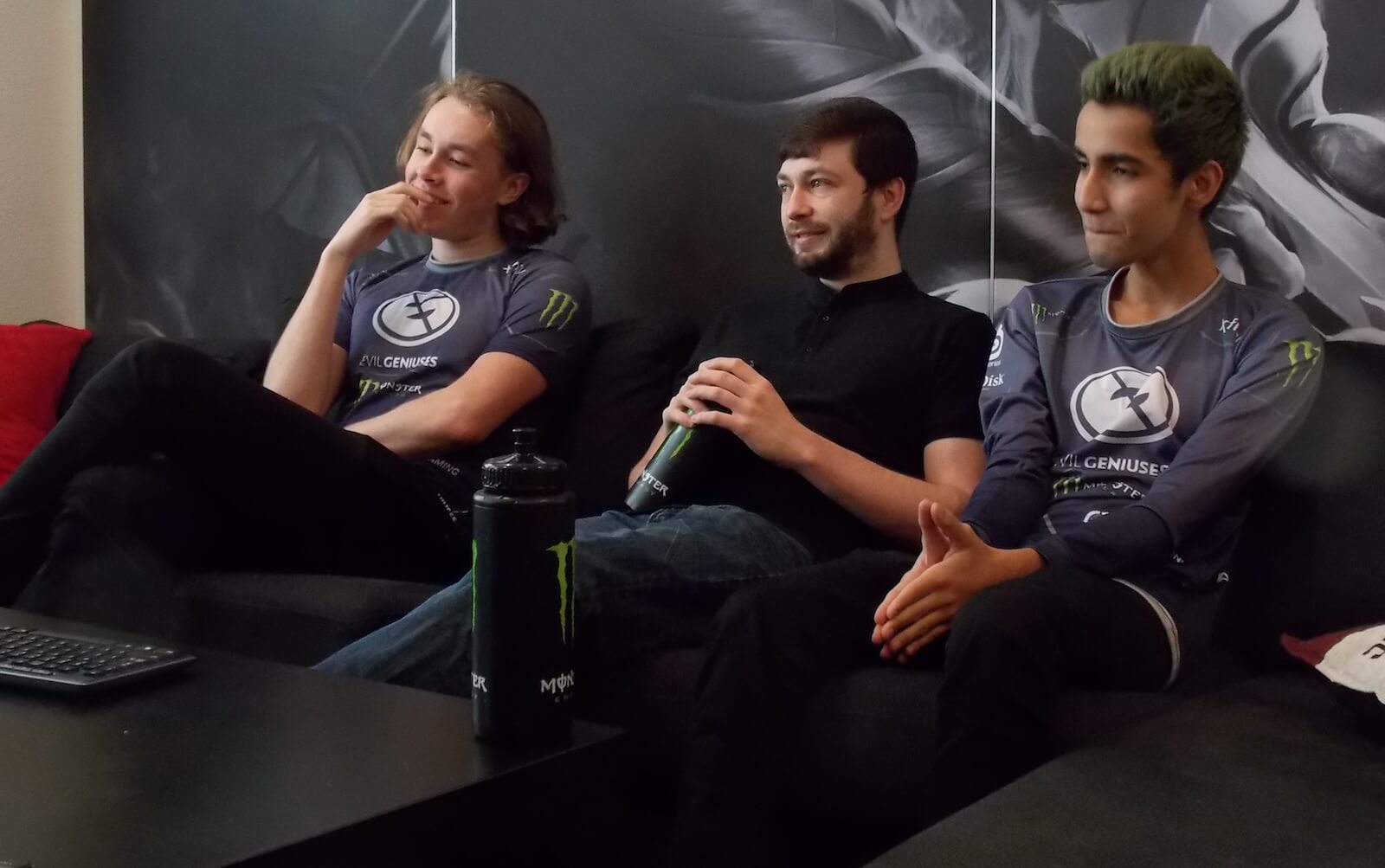
Above: From left to right: Ludwig “zai” Wåhlberg, Clinton “Fear” Loomis, and Sumail “Suma1L” Hassan.
According to Loomis, the players usually start warming up around 10 or 11 a.m. every day. They scrimmage online against other professional teams for six hours and then devote the rest of their day to individual practices. Because their job involves sitting at their computers for long periods of time, the guys make sure to get up and move around as much as possible.
“I think we’re pretty good at just not sitting down for six or seven hours at once,” said the 19-year-old Wåhlberg. “We usually get up and go over [to the living room] and sit down and we talk. We go [out] for lunch … so we’re not just sitting for seven hours straight.”

Above: The team’s go-to source for sodas and energy drinks.
The living room features more Dota 2 art and sponsor logos, as well as a large TV and a black couch. The room leads into a fairly ordinary kitchen stocked with basic necessities. A small mountain of Amazon Fresh containers were near the front door: Aram said they rely a lot on meal delivery services to feed the team.
The garage is perhaps the second most important place in the house after the practice area. Players like to spend their breaks there playing ping pong.
“That’s usually our physical activity,” said Loomis, laughing.
Most of the guys also exercise at a nearby gym a few times a week. And though they’re careful about what they eat, they also do plenty of burger runs at the local In-N-Out.
“They’re still kids at the end of the day,” said Aram.
Treating it as a job
While the Evil Geniuses’ training facility resembles a frat house in some ways — a fridge filled with energy drinks, bedrooms with clothes strewn all over the place, the ping-pong table — it’s also their office. And the players have to learn to respect it as such. Part of Aram’s role as the team manager is to work with the coach to make sure they consistently follow the rules.
“We have policies that sound normal in a traditional work environment, like being up an hour before your match to talk about it and prepare and warm up,” said Aram. “But in a lot of teams, guys roll out of bed and jump into [scrimmages] and do badly. … I think that’s something this team has that a lot of [others] probably don’t, which is regular accountability and talks you’d see in a more professional setting.”
Aram, who also lives in the house during the season, tries to stay out of strategizing discussions for Dota 2 — that’s for Loomis and Nielsen to handle. Instead, Aram sees his job as empowering the players so that they can perform to the best of their abilities. He makes sure they’re “working together toward the same goal and not against each other,” which he said is a common problem among teams. That involves both 1-on-1 talks and team meetings.
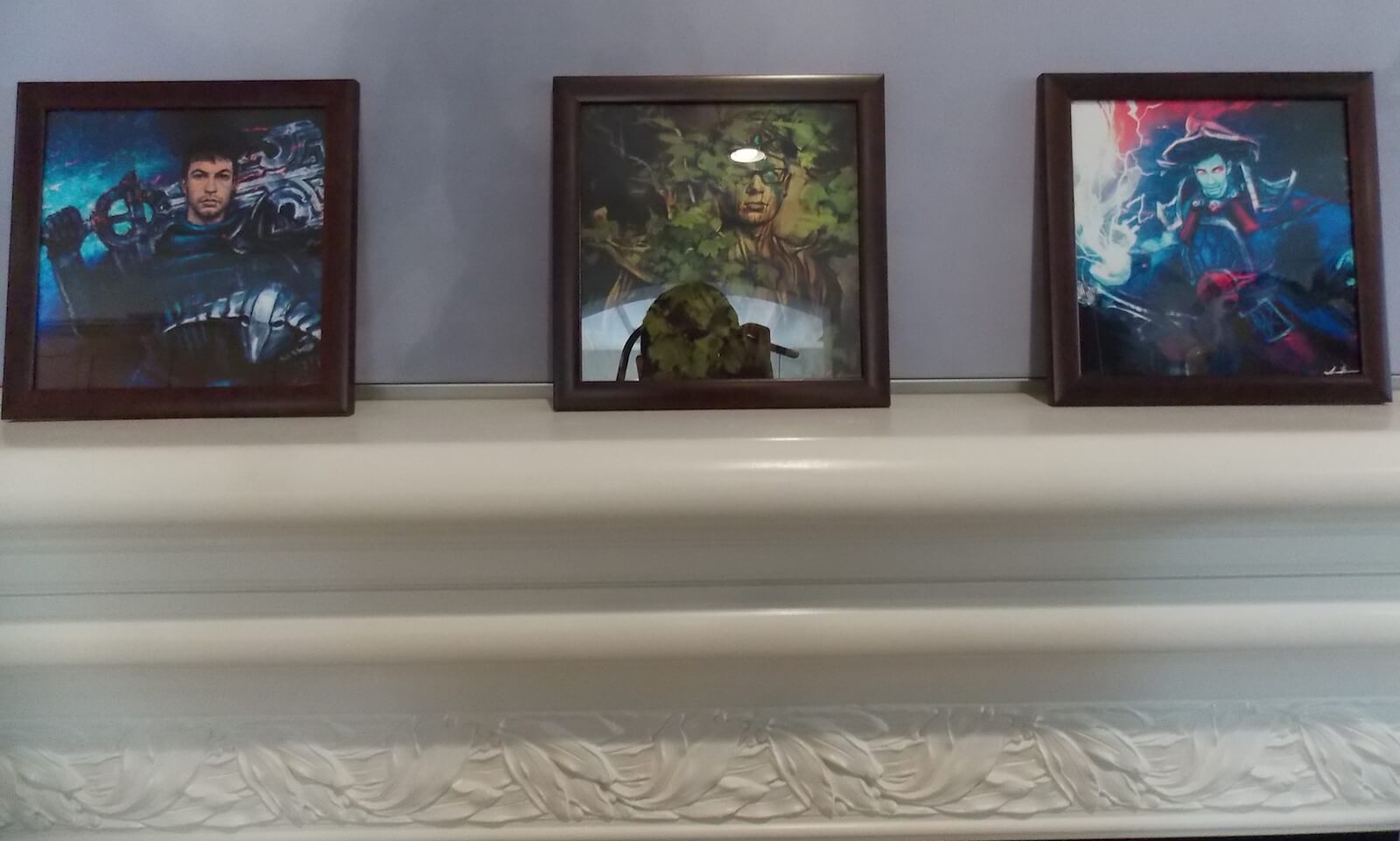
Above: Fan art depicting various players dressed as Dota 2 characters.
When clashes among teammates arise, Aram also sometimes serves as the mediator. In those cases, he helps each side understand the other’s frustrations so that they can see the bigger picture. The goal is to get them to focus less on undermining each other and more on getting better at the game. But for the most part, he said everyone on the team — all considered veterans in Dota 2 — are pretty good at working through their problems.
“They’re doing what I hoped I’d see with the other different teams I’ve been with, which is to hold each other accountable and not just rely on myself or a coach or somebody to try and do all the work to make the pieces fit,” said Aram.
According to Wåhlberg, who’s been playing with Evil Geniuses on-and-off for years, it’s hard to determine what a good team composition should look like. In his experience, bad teams happen when too many players “try to make their voices heard.”

Above: Andreas “Cr1t-” Nielsen (left) and his teammates.
Wåhlberg said his former squad, Team Secret, fell apart because everyone “wanted to do their own thing.” Ideally, he thinks a team should build around its superstars. That’s exactly what Evil Geniuses has done with “Arteezy” Babaev and “Suma1L” Hassan, with Wåhlberg, Nielsen, and Arora supporting them.
Babaev is one of the most popular players in the Dota 2 community, as well as a prolific online streamer. One time, an obsessed fan from China gave him medicine at a tournament because she heard him coughing during a livestream.
Meanwhile, the 17-year-old Hassan is a bonafide wunderkind. He became one of the youngest players to ever earn $1 million in Dota 2 when EG won at TI5. He started playing the game in internet cafes in his home country of Pakistan and quickly burst onto the esports scene in 2014 after his family moved to the U.S.
Last year, Time Magazine named Hassan one of 2016’s most influential teenagers, a list that includes Stranger Things star Gaten Matarazzo and five-time Olympic gold medalist swimmer Katie Ledecky. Despite his young age, Hassan appears to be handling his rising fame and fortune rather well.
“[Sumail] has an immigrant experience. He has this child-celebrity experience. He has wealth at a young age … these are all really complex things,” said Aram. “And he’s grown into it in a really remarkable way and matured a lot. I think that’s a testament to him, his family, and the people around him.”
For love of the game
Anchoring the team is their 28-year-old coach Clinton “Fear” Loomis. The former player began his career more than 10 years ago — way before esports became a booming business in the U.S. — by competing in the original Dota. Loomis was one of the three players Valve followed in its 2014 esports documentary Free to Play. In the film, one of his best friends calls him the “Rocky Balboa” of Dota because he never gives up.
“It’s very valuable to have someone with a lot of experience,” Wåhlberg said of his coach.
In the early days of his career, Loomis was only making a few hundred dollars a month and had a hard time convincing sponsors to pay for his overseas trips (no major Dota tournaments took place in the U.S. at the time). These days, he doesn’t have to pay for anything. When I asked him if he’s amazed at how far esports has come since he started, he was nonchalant about it.
“[The growth] happened very slowly, so I’ve just gotten used to it. But … it is pretty crazy,” Loomis said.
In 2014, he started experiencing elbow and forearm pain, forcing him to step away from the Evil Geniuses roster. He eventually rejoined them in time for their historic victory at TI5. But once the 2015-2016 season was over, Loomis decided to retire from competition so he could focus on recovering from his injury.
He sees coaching as a way of playing vicariously through his team.
“Obviously, playing is more fun, but you can’t play forever,” said Loomis.
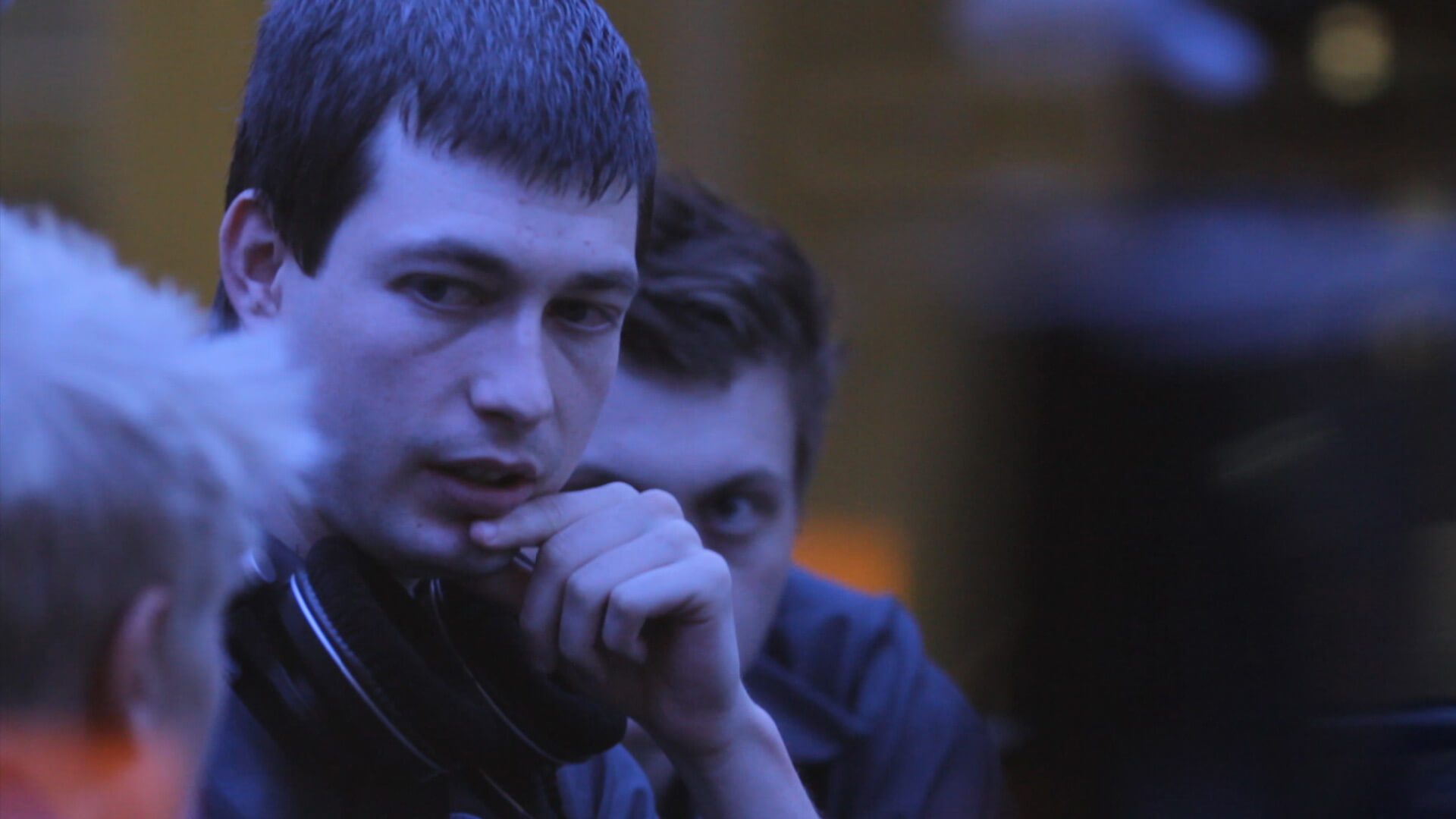
Above: Free to Play follows Loomis and two other players at the first International in 2011.
One consistent theme among the players was that they didn’t plan on making a living through esports. Loomis began playing Dota for fun. Wåhlberg can’t imagine playing anything else; he said he’s just “not very good” at other games. And Hassan has been playing the Dota series for 10 years, more than half his lifetime.
“I started playing Dota when I was around 7. I found it pretty easy to do because you don’t have to go out. You just sit at the computer,” Hassan said. “Your mom brings you food, and you just eat and play. … Then at one point, TI came out and the prize was really big. I would say I was decent at that point. So I just kept playing and thought I would be good some day.”
His bet paid off. As my visit wound down, the players returned to their PCs to settle in for their daily practice while Loomis watched over them. Without the cheering from a crowd or the rapid-fire commentary from Dota 2 broadcasters, the room was eerily quiet. Only mouse clicks, soft voices, and swift keyboard taps punctuated the silence.
At the Boston Major, Evil Geniuses landed in third place (earning $250,000) after losing in the semifinals to OG, a European team that moved on to win the $1 million grand prize. They fared better in subsequent tournaments, nabbing first place in both China Top and Dota Pit. But the long road to the seventh International is just beginning.
